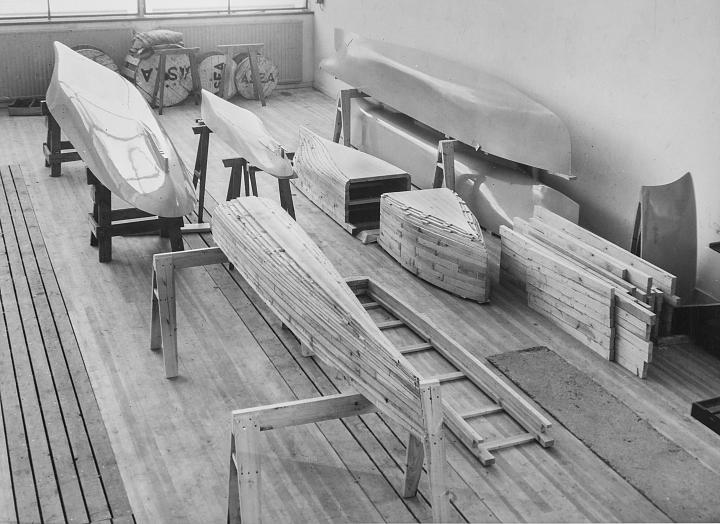
Our story
The year was 1908. Leading Swedish industrialist Hugo Hammar was feeling more and more impatient.
‑ Sweden needs its own development resources, he argued. Our expanding shipbuilding industry has grown remarkably in size. Yards such as Götaverken, Eriksberg and Kockums are already firmly established on the international market. Sweden needs a towing tank!
Years later, in 1936 to be precise, the Swedish government finally decided to fund a towing tank. It was to co-operate closely with Chalmers University of Technology in Gothenburg, but at the same time be separate in terms of daily operations and commercial work.
By 1940 the building of the towing tank was completed. It was named SSPA, the Swedish abbreviation for Swedish Ship Testing Facility. With World War II raging around Sweden, it was natural that, during the first five years of operation, most of the work was done for the Swedish Navy. The projects included all kinds of surface ships, ranging from fast torpedo boats to cruisers as well as submarines and torpedoes. Restrictions in imports made it almost impossible to acquire equipment from abroad, and SSPA had to rely on the ingenuity of its own personnel to develop some of the necessary instruments and processes.
Ever since, SSPA has played an important role in marine industrial development. The major part of this work has been concentrated on ship design. Since the beginning, more than 8,000 ship hull forms have been tested at SSPA, including both merchant and naval vessels. The towing tank is internationally recognized as being in a class of its own, together with our other test beds.
Today SSPA is a leading international partner for sustainable maritime solutions, owned by RISE (Research Institutes of Sweden). We operate worldwide within all principal fields of maritime engineering and related sciences. The name SSPA is not an acronym anymore but a brand that is well known around the globe. It is even referred to in several Chinese books on naval architecture.
